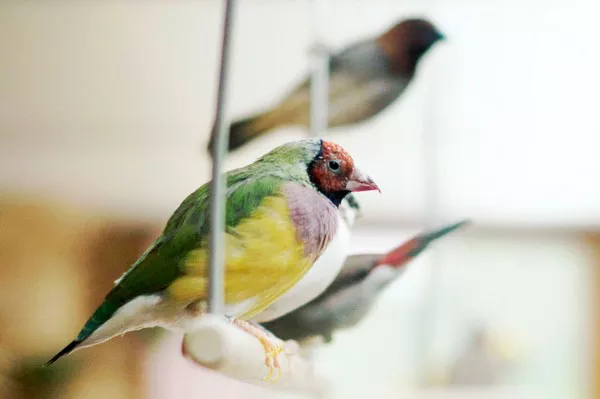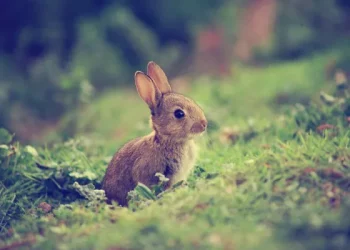Corn snakes (Pantherophis guttatus) are one of the most popular pet snakes due to their calm demeanor, beautiful coloration, and relatively easy care. As with all reptiles, understanding their natural behaviors is crucial to providing the best care. One such behavior that pet owners often inquire about is their sleeping patterns, particularly whether corn snakes sleep during the day or if they are active at night.
This article explores the sleeping habits of corn snakes, factors that influence their sleep, and how to provide an environment that aligns with their natural behaviors. Whether you are a seasoned snake owner or considering getting a corn snake as a pet, this information will help you ensure your pet’s well-being and comfort.
1. Introduction to Corn Snakes
Before delving into the question of whether corn snakes sleep during the day, it’s important to understand who they are and their natural environment. Corn snakes are non-venomous constrictors that are native to the southeastern United States, especially in areas like Georgia, Alabama, and Florida. These snakes are named after the pattern on their scales, which resembles the markings found on corn kernels.
Corn snakes are terrestrial animals, meaning they spend much of their time on the ground, although they are also capable climbers. In the wild, they thrive in a variety of habitats, including grasslands, forests, and farmlands, where they prey on small rodents and birds.
In captivity, corn snakes are often kept as pets in vivariums that simulate their natural habitat. These environments are usually equipped with heat sources, hides, and substrate to replicate the conditions they would encounter in the wild.
2. Understanding Snake Sleep Cycles
Snakes, including corn snakes, are ectothermic (cold-blooded) animals, meaning their body temperature is regulated by their external environment. This has a direct impact on their activity levels and sleep cycles. Unlike mammals, which have a consistent sleep-wake pattern driven by internal circadian rhythms, snakes’ activity is more closely linked to environmental factors, such as temperature and the availability of food.
In general, snakes are not known for having sleep patterns similar to those of humans. They don’t have REM (rapid eye movement) sleep, a characteristic that is often associated with dreaming. Instead, their sleep can be described as a state of rest in which their metabolic processes slow down, and they become less responsive to external stimuli.
3. Are Corn Snakes Nocturnal or Diurnal?
To answer whether corn snakes sleep during the day, we must first understand whether they are nocturnal, diurnal, or crepuscular.
- Nocturnal animals are active during the night and sleep during the day.
- Diurnal animals are active during the day and rest at night.
- Crepuscular animals are most active during the twilight hours—dawn and dusk.
Corn snakes fall into the crepuscular category, meaning they are most active during the early morning and late evening hours when light levels are lower. This behavior is a survival mechanism that helps them avoid predators while hunting for food. Their prey—small rodents—are also typically active during these times, making them more likely to encounter a meal.
4. Do Corn Snakes Sleep During the Day?
Given their crepuscular nature, corn snakes tend to rest or “sleep” during the day. This sleep is not exactly the same as the sleep that mammals experience. Rather, it is a period of reduced activity in which the snake may rest, curl up in a hide, or remain in one spot for extended periods.
While corn snakes are technically not “sleeping” in the traditional sense, they are still inactive during the day. Their metabolic rate slows down, and they tend to seek shelter in dark, secure areas to avoid potential stress or danger. In captivity, you may notice your corn snake hiding in a cool, dark area of its enclosure during daylight hours.
5. Factors That Influence Sleep in Corn Snakes
Several factors affect a corn snake’s sleep patterns. Understanding these factors can help you create an environment that supports their natural behaviors and promotes their health and well-being.
Temperature and Light Cycle
As ectothermic animals, corn snakes rely on external sources of heat to regulate their body temperature. Temperature plays a critical role in their activity levels and, therefore, their sleep patterns.
- Temperature Gradient: In the wild, corn snakes often seek out areas with a temperature gradient, where they can move between warmer and cooler spots depending on their needs. In captivity, it is important to provide a similar gradient in their enclosure, with a warm side and a cool side. This allows the snake to choose its preferred temperature, which may influence how much rest or activity it experiences during the day.
- Light and Dark Cycles: Corn snakes have evolved to live in environments with natural day-night cycles. It is important to replicate this cycle in captivity by providing a consistent light-dark schedule. This helps regulate their circadian rhythm and supports healthy sleep habits. In most cases, providing around 12 hours of light and 12 hours of darkness each day is recommended.
Feeding and Digestion
Corn snakes, like other snakes, tend to be more active when they are hungry. After eating, they enter a period of rest to digest their food. During digestion, their metabolism increases, and they may become less active during the day to focus on processing their meal.
If a corn snake has recently eaten, you might notice that it rests more than usual during the day, especially if the food was large or particularly filling. This is a normal part of their natural behavior.
Stress and Environmental Factors
Corn snakes are highly sensitive to their environment. Factors like sudden changes in temperature, humidity, or noise can cause stress, which in turn affects their sleep and activity levels. Stressful conditions might lead to increased hiding or lethargy during the day, as the snake feels the need to retreat and rest.
To minimize stress, it’s essential to provide a calm and stable environment for your corn snake. This includes maintaining a consistent temperature, ensuring proper humidity levels, and avoiding loud noises or frequent handling during the day.
6. How Much Sleep Do Corn Snakes Need?
Corn snakes are generally not as dependent on sleep as mammals are. While they do have periods of rest, they don’t have a set amount of sleep each day. Their sleep is driven by factors like temperature, food availability, and environmental conditions rather than a fixed internal rhythm.
In captivity, corn snakes may rest for anywhere from 12 to 18 hours a day, especially during periods of inactivity or after eating. However, they are likely to remain alert during their rest, and their eyes may not close fully. Instead, they will remain in a state of reduced activity, occasionally adjusting their position or moving to a different spot in their enclosure.
7. Signs That a Corn Snake Is Resting or Sleeping
It can be difficult to tell whether a corn snake is resting or sleeping, as they often remain still for long periods. Here are some signs that may indicate your corn snake is in a state of rest:
- Reduced Movement: A resting corn snake will stay in one spot for an extended period, with minimal movement.
- Curled Position: Snakes, including corn snakes, often curl up in a tight coil when resting. This is a defensive posture that provides comfort and security.
- Lack of Response: A snake that is in a deep state of rest may not respond to external stimuli, such as touch or noise, in the same way it would when alert and active.
- Slow Breathing: During rest, a corn snake’s breathing may slow down, and its movements may become more deliberate.
If your corn snake is consistently inactive during the day and exhibits these behaviors, it is likely resting rather than actively exploring its environment.
8. How to Provide a Proper Resting Environment for Your Corn Snake
To ensure that your corn snake is able to rest and sleep effectively, you should provide an environment that mimics its natural habitat. Here are some tips for creating the best conditions for your pet:
- Hide Areas: Provide at least one hide on each side of the enclosure (warm and cool) where your corn snake can retreat and rest. Snakes feel more secure when they have a place to hide and will spend more time resting if they feel safe.
- Proper Temperature: Maintain a temperature gradient within the enclosure, with a warm side (80-85°F) and a cooler side (70-75°F). This allows your corn snake to regulate its body temperature and decide when it wants to be more active or rest.
- Humidity: Corn snakes require a moderate level of humidity (40-60%) in their enclosure. Too much or too little humidity can lead to health issues, such as skin shedding problems or respiratory issues, which can affect their sleep patterns.
- Light Cycle: Mimic natural day-night cycles by providing light for 12 hours and darkness for 12 hours each day. Avoid leaving lights on at night, as this can disrupt their natural sleep cycle.
Conclusion
In conclusion, corn snakes do sleep during the day, but their sleep patterns are different from those of mammals. As crepuscular animals, they are more active during the twilight hours of dawn and dusk. During the day, they tend to rest in hides or secure areas, conserving energy and avoiding potential threats. The amount of rest they need depends on various factors, such as temperature, food availability, and environmental conditions.
By understanding the natural sleep habits of corn snakes and creating an environment that meets their needs, you can help ensure that your pet stays healthy, happy, and stress-free. Keeping a consistent light-dark cycle, providing adequate hiding spaces, and maintaining proper temperatures are key elements in supporting your corn snake’s well-being. Whether you’re a new snake owner or a seasoned enthusiast, understanding your corn snake’s sleep patterns will help you become a more knowledgeable and caring pet owner.
Related Topics:






















